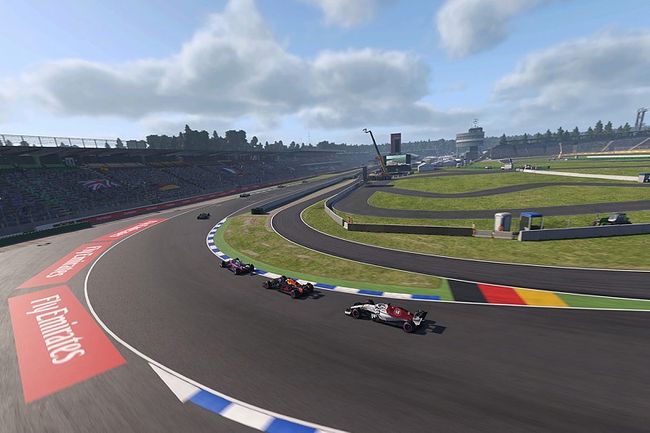Table of Contents Show
In this guide we’ll be covering the meaning of each individual racing flag used in Formula 1. This guide is pointed more towards rookie drivers, people who really just got into racing. Any seasoned sim-racer or novice player should know the meaning behind each flag, sometimes it’s just fun to take a look at them too! Well with that out of the way, let’s get into it.
Commonly used race flags
Green flag
Let’s just start with the flag you will always first come across whenever a race event is taking place and that is the green flag. Whenever the marshalls pull out the green flag this means track conditions are safe and the race is ago. The green flag always starts up all race events, this is why it will always be the first flag seen when viewing a race. The green flag can also be pulled out at the end of a hazard, in this case it’s signaling drivers that track conditions are safe again and that they can up the pace to normal racing speed.
Yellow flag
Up next is the yellow flag. When this flag is waved you must stop racing, precieve of caution and wait to be picked up by the pace car (safety car). However in the current stages of Formula 1 racing sometimes there will be a virtual safety car (vsc) deployed instead of an actual pace car. The Fédération Internationale de l’Automobile (FIA, English: International Automobile Federation) will make use of the virtual safety cars whenever the track conditions are still acceptable for racing but when drivers will just have to precieve of caution. It’s important to note that if you break the any of the following rules you will be given a penalty; ignoring the yellow flag by speeding through or by overtaking during a yellow flag. When track conditions are safe to race again the green flag will be waved and drivers can go back to normal racing.
Red flag
The flag above the yellow flag is the red flag. The red flag will be made use of whenever track conditions are not suited for racing. Conditions like extreme rain, a storm or a severe crash which has left a lot of car parts waiting to be cleaned up scattered all over the track making racing normally unsafe, all these thing are just a couple of examples of when a race can be stopped with a red flag.
Blue flag
The blue flag is waved to slower drivers on the circuit, backmarkers. Backmarkers have to make room for the drivers lapping them without delaying them too long. As the slower driver you have to make room fast or lift-off the throttle so the faster drivers won’t be held up. If however you do hold up a faster driver that is lapping you on the track you will be penalised for unsportsmanlike behavior. If you have been lapped by a faster driver and you manage to keep up the pace you are allowed to pass the driver that lapped you earlier without being penalised for it.
Black flag
The black flag will be waved whenever a driver has violated too many race rules. This might be because of dangerous driving but you also might get black flagged if there is a problem with your car that might be dangerous to not only you but also the other drivers on the track. When you are being black flagged you will have to enter the pit-lane as soon as possible, it’s important to know that you actually have to enter the pit-lane as soon as possible, if you don’t you will be penalised for ignoring a black flag.
White flag
With one lap to go you will see the white flag. This flag will be first displayed to the car in pole position signaling the driver that there is one more lap remaining before the race will end and finally be won by the driver who crosses the line first on the final and next lap.
Chequered flag
The final flag in the race of course is the chequered flag. If you see this flag and you’re in first place you are the race winner. The race will be over if all of the cars that are still on track have crossed the line with this flag up.
In summary
So in summary what you have learned are the meanings behind the most commonly used race flags on the track. Here’s a quick recap on the meaning behind all of them.
- Green flag – start of race / restart / end of hazard / safe racing conditions / pit lane open
- Yellow flag – caution / road course local caution (single) / road course full-course caution (twin)
- Red flag – session stopped
- Blue flag – give way to faster cars approaching
- Black flag – disqualification / return to the pits
- White flag – final lap
- Chequered flag – session finished / winner
Final words
Well I hoped this quick guide helped you understand the flags used in racing.
